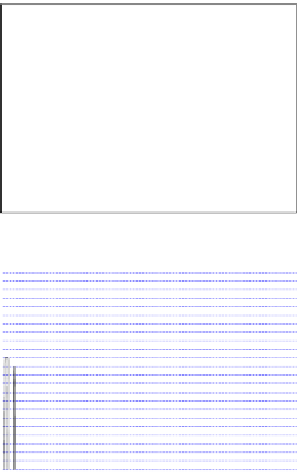Information Technology Reference
In-Depth Information
and second derivative of the scale-space surface are shown in fig. 1. Specially
for the second derivative noise yields a lot of curves. This curves could mag-
nify low level environmental features yielding a too fragmented world represen-
tation. An adequate selection of scale levels, specially the lowest level could
remove eventually the majority of the small curves. We propose a filtering
procedure that can adapt itself to the mean amount of environmental noise,
removing noise.
700
700
100
100
10
10
1
1
0.1
0.1
-180
-120
-60
0
60
120
180
-180
-120
-60
0
60
120
180
700
700
100
100
10
10
1
1
0.1
0.1
-180
-120
-60
0
60
120
180
-180
-120
-60
0
60
120
180
Fig. 1.
Zero-crossing level curves for first, a) and c), and second derivatives, b) and
d), of scale-space surface. In c) and d) shown the curves remaining after noise filtering.
Horizontal blue lines are discretized scale-space parameter values.
The filtering procedure is based on a characterization for the curves generated
by noise. In fig. 1 a) and b) we can appreciate that noise generated curves are
usually significantly narrower and lower than curves generated by high level
features, these are most of curves showed in 1 c) and d). So we looked for a
basic characterization based on areas under curves. Experiments using fixed and
simple patterns of noise gave an approximate interval for the maximum area of
noise generated curves that roughly separates both types of curves. Values for
noise deviation in [0, 0.05] were used, this upper ends represents
50
cm.
at
10
m.
We have choose inside that interval the value
as area upper threshold. Curves
with area under the threshold are preliminary classified as noise generated. To
refine the search for noise generated curves we compute the mean
h,
and the
standard deviation
s
h
for selected curves heights, setting
h
50
+
ks
d
,
as the definitive





























































































































































































Search WWH ::

Custom Search